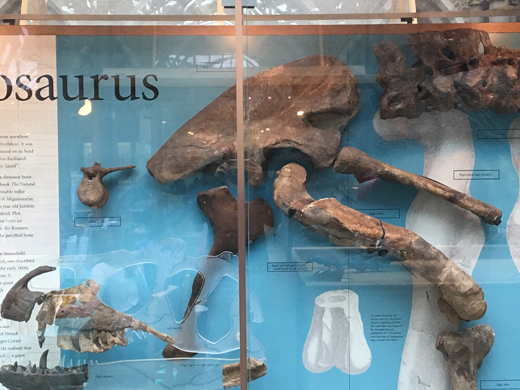Happy Birthday Sir Richard Owen
Happy Birthday Sir Richard Owen
Sir Richard Owen, English anatomist and palaeontologist was born this day in 1804. Born in Lancaster, in the north west of England, he rose from relatively humble origins as a university educated surgeon’s apprentice to become one of the most prominent and eminent scientists of the 19th century.
He pioneered the science of vertebrate palaeontology conducting extensive research into extinct mammals, reptiles and birds. Perhaps he is best remembered for two particular contributions to the world of science. He coined the phrase “Dinosauria” meaning “Terrible Lizards” or “Fearfully Great Lizards”, hence the term Dinosaur was created.
Sir Richard Owen
A manipulative and resourceful person, Owen was keen to promote himself and his achievements, often to the detriment of his scientific rivals. The naming of Dinosaurs as a separate and distinct order of reptiles illustrates his scheming. It has been claimed that when the paper describing the similarities of Megalosaurus and Iguanodon and identifying them as a distinct order of reptiles – the Dinosaurs was published, many were wrongly dated as August 1841 and not April 1842 (the actual date of publication). As a result Sir Richard Owen was able to claim that he had come to these conclusions much earlier than any of his peers.
Courted by aristocracy and royalty Sir Richard Owen (he was knighted in 1884), rose to the highest echelons in Victorian society and he is regarded as a brilliant anatomist and scientist with perhaps his most important work being the four volume “History of British Fossil Reptiles” first published in 1849. His second major contribution to popular science was his determination to unite all the various fossil and anatomical collections under one roof. He was the driving force behind the creation of the British Museum of Natural History (now the Natural History Museum), in South Kensington, London. This museum opened up science to the public and gave ordinary people access to knowledge, indeed the museum has often been cited as model for the later museums that were to follow in other major cities in the world. There is some irony to this as Owen based much of his plans for the London museum on the Museum National d’Histoire Naturelle in Paris.
Discrediting Fellow Scientists
Although often criticised for his willingness to discredit fellow scientists and there is some evidence to suggest that he wrongly claimed scientific discoveries as his own, Sir Richard was instrumental in developing the science we know today as palaeontology.
Technically, Sir Richard Owen was not the first person to classify dinosaurs as a separate group from the extant reptile orders, The German palaeontologist Hermann von Meyer viewed the dinosaurs as a separate group as early as 1832. He classified dinosaurs as “Saurians”. During the early 1830s only a few dinosaurs had been named and described, Owen was able to identify a number of anatomical characteristics that showed that genera such as Megalosaurus and Iguanodon were related. Although only a few bones and teeth of Megalosaurus had been found, it had been classified as a meat-eating quadruped.
More remains of Iguanodon had been discovered and this animal had been classified as a four-footed herbivore. The breakthrough came for Owen when he was able to study a newly discovered Iguanodon sacrum and compare it to a Megalosaurus sacrum that was in the collection of the Ashmolean Museum at Oxford. The five sacral vertebrae forming the lower part of the spine of these animals were fused in exactly the same way.
It was Owen who grasped the significance of the adaptation, as it would have enabled these animals to carry their huge bulk on land. This and other anatomical features led Owen to conclude that these animals deserved a distinct classification from other reptiles and this led him to develop the Dinosauria classification.
Picture credit: Everything Dinosaur
To view models of Megalosaurus and other dinosaurs: Prehistoric Animal Models and Figures.


